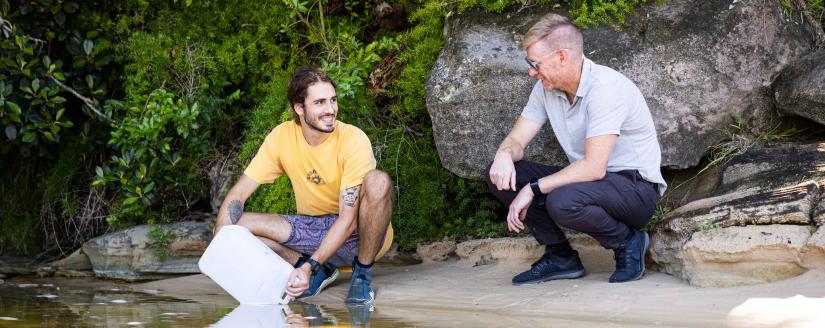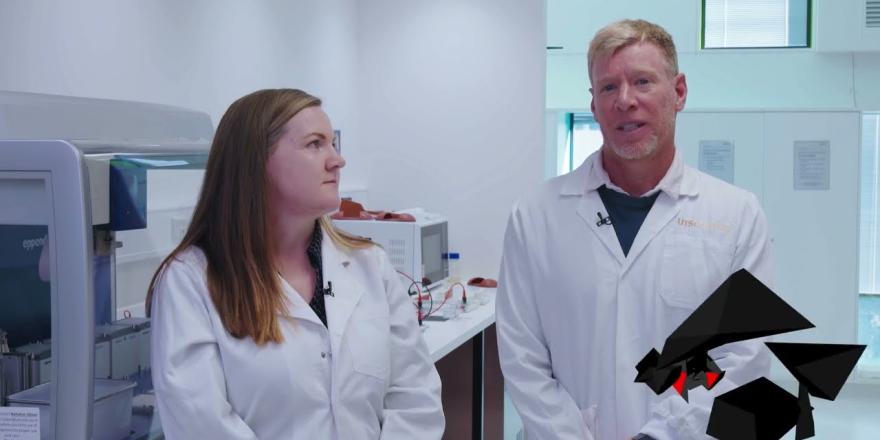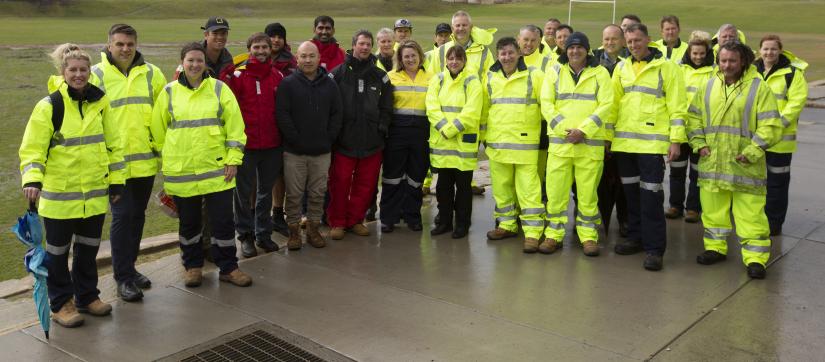While water quality is generally good at most Australian beaches, nothing can ruin a day by the sea more than if it turns poor. This can often happen after heavy rain.
But when poor water quality strikes, tracking down the culprits can be a murky business.
“The water quality testing routinely conducted at beaches is great at detecting faecal contamination, ensuring they can stay open safely,” says Professor Justin Seymour, the scientific team leader from the UTS Climate Change Cluster.
“But it lacks the precision to identify whether the exact source is human sewage, domestic animals, farm animals or wildlife, which is an important question to answer if you want to fix the cause of contamination."
At the popular Terrigal Beach, on the Central Coast, poor water quality had been an issue for the past decade with the NSW Government’s Beachwatch monitoring program consistently rating it “poor”.
In 2019, Central Coast Council began working with UTS and the NSW Department of Planning and the Environment to get to the bottom of the issue.
“Using a suite of cutting-edge tools to track microbes and analyse their DNA we were able to show the dominant source of contamination was human sewage with a minor contribution from dog faeces in the surrounding catchment,” Professor Seymour says.
In fact, the team demonstrated sewage overflow into a specific stormwater drain had the biggest impact on water quality.
“Once we identified the sources of beach pollution, Council could focus on sewer remediation,” says Director of Central Coast Council Water and Sewer Jamie Loader.
“We inspected 115km of sewer mains and identified one third of these as in need of repair. We’ve since remediated 41km, which is 95 percent of this problem sewerage infrastructure.”
Despite the significant wet weather and flooding events in recent years, Beachwatch monitoring has shown improvements in water quality during dry weather, being suitable for swimming almost all of the time.
“The success at Terrigal Beach demonstrates the impact of applying key water management science to mitigating the impacts of poor water quality,” says Dr Jaimie Potts, a senior scientist with the NSW Department of Planning and Environment.
Professor Seymour and his team aren’t resting there. They’re looking to further tailor the toolkit to the Australian environment, and make it easier and faster to use.
“We’re looking at identifying various microbes and markers that are specific to Australian environment – such as bacteria found in native animal and bird faeces,” he says.
“UTS are continuing to innovate and looking to put the technology in a mobile laboratory to quickly understand the microbial source."
Research team
-
UTS Climate Change Cluster
-
UTS Climate Change Cluster
-
UTS Climate Change Cluster
-
Dr Melanie JamesCentral Coast Council
-
Vanessa McCannCentral Coast Council
-
Dr Jaimie PottsNSW Department of Planning and Environment
-
Dr Meredith CampeyNSW Department of Planning and Environment
-
Dr Colin JohnsonNSW Department of Planning and Environment
-
Dr Peter ScanesNSW Department of Planning and Environment





